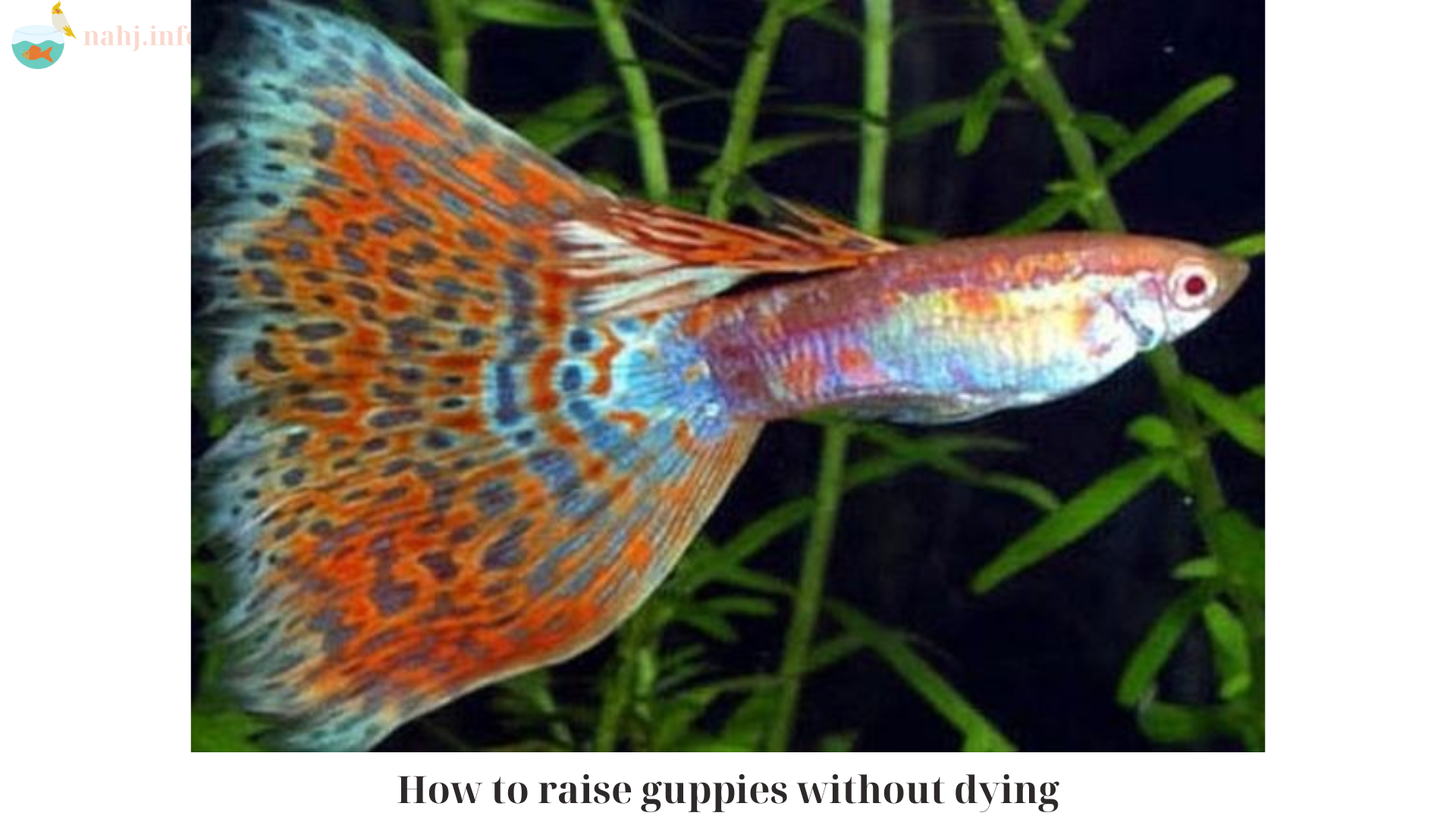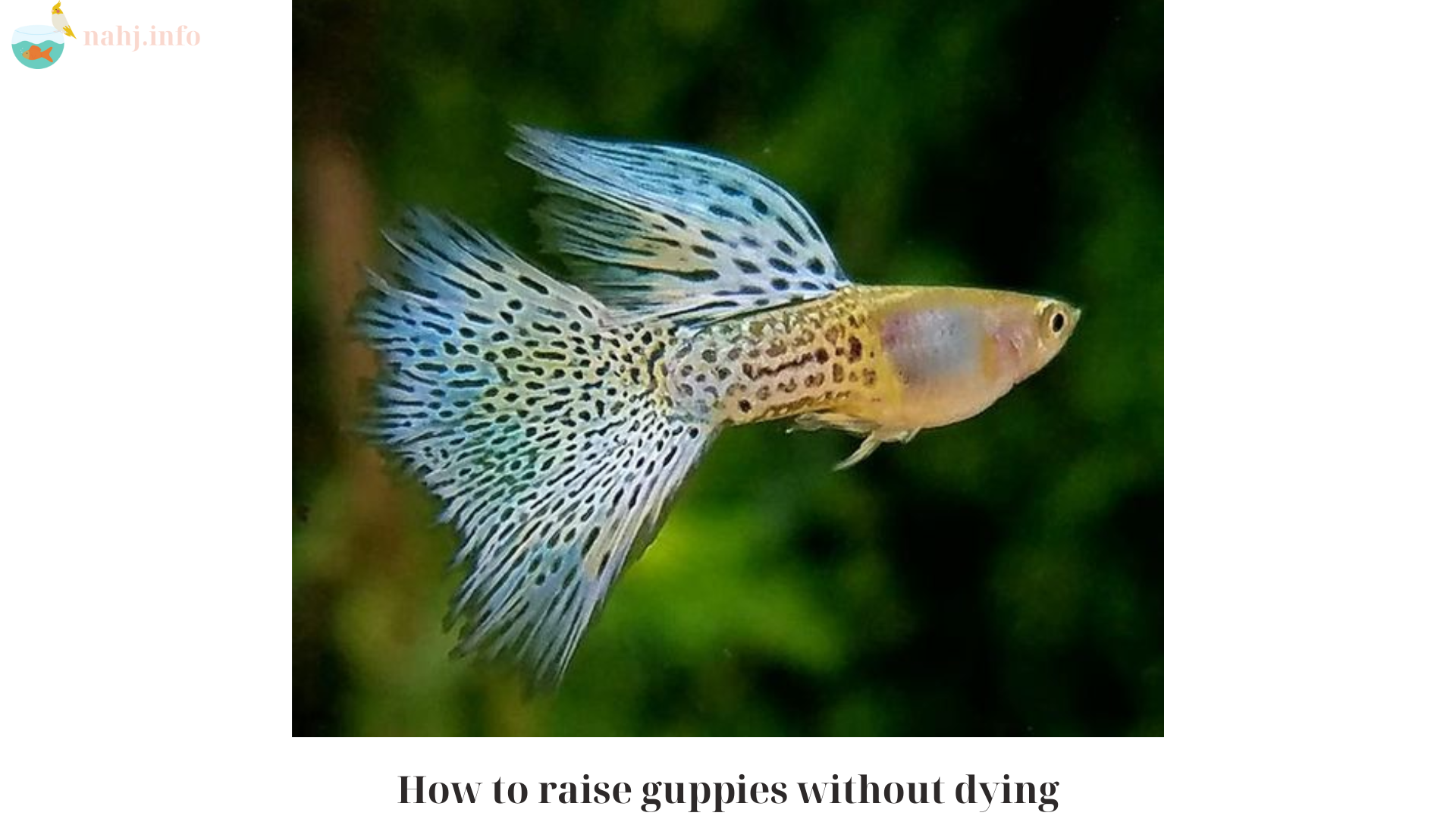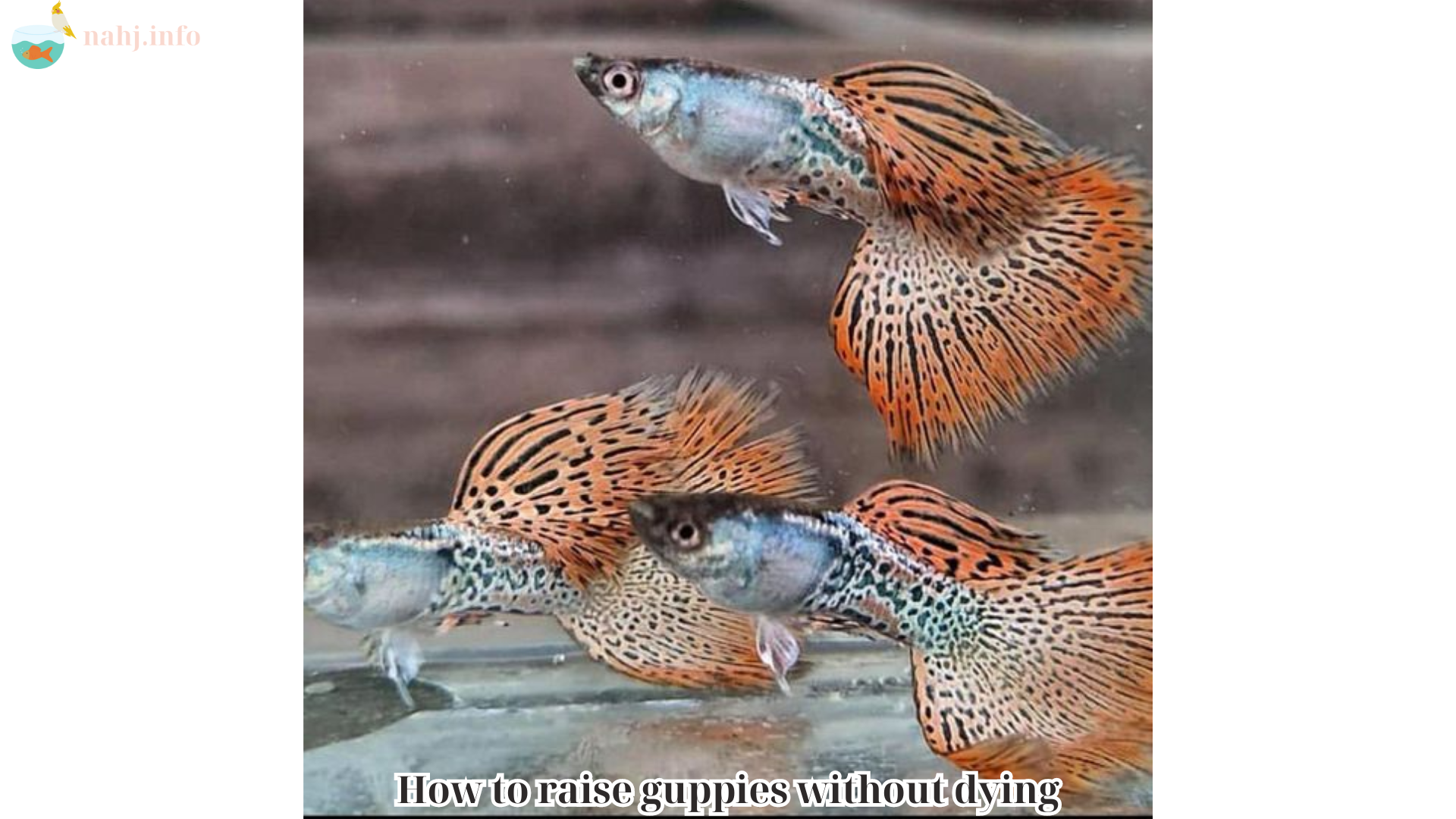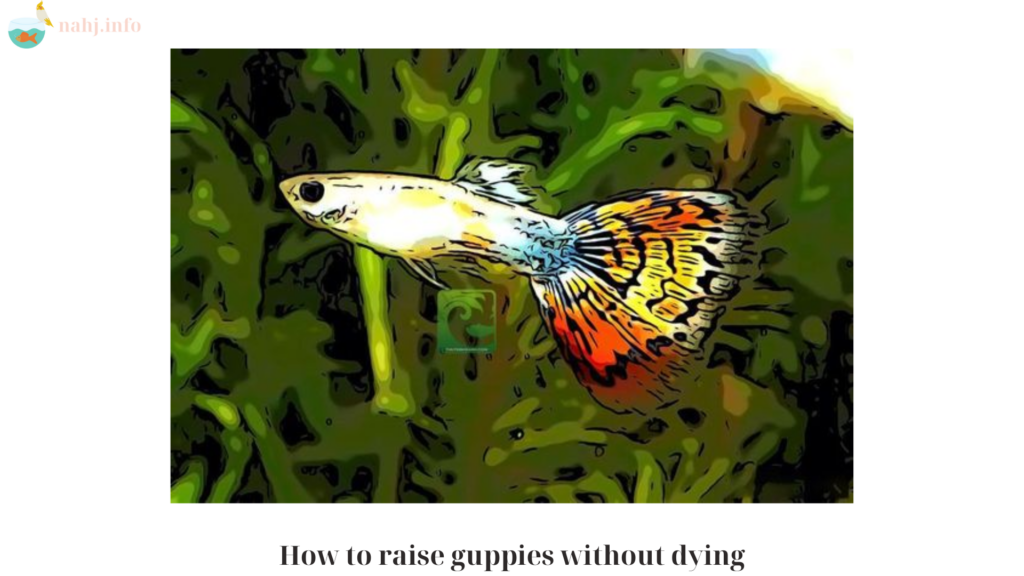Raising guppies, also known as millionfish or rainbow fish, can be a rewarding experience for both beginner and experienced aquarists. These colorful and lively fish are popular due to their vibrant colors, ease of care, and prolific breeding habits. However, ensuring their survival and health requires proper knowledge and attention. This comprehensive guide by Nahj will walk you through everything you need to know to raise guppies without them dying.
Table of Contents
ToggleHow to Raise Guppies Without Dying: A Comprehensive Guide

Basic Characteristics
Guppies (Poecilia reticulata) are small, tropical freshwater fish native to South America. They are known for their bright colors, flowing fins, and active behavior. Guppies are livebearers, meaning they give birth to live young instead of laying eggs.
Lifespan and Growth
Under optimal conditions, guppies can live for 2-3 years. They grow up to 2 inches in length, with males being smaller and more colorful than females. Understanding their lifespan and growth patterns is crucial for providing the right care at each stage of their lives.
Setting Up the Aquarium
Tank Size and Environment
Tank Size: A 10-gallon tank is ideal for a small group of guppies. For larger populations, increase the tank size accordingly to provide ample space for swimming and breeding.
Water Parameters: Guppies thrive in water with a temperature between 72-82°F (22-28°C), a pH of 6.8-7.8, and hardness between 8-12 dGH. Regularly test and maintain these parameters to ensure a stable environment.
Filtration and Aeration: Use a good quality filter to keep the water clean and an air pump to ensure proper oxygenation. Over-filtration can harm guppies, so adjust the filter flow to a gentle setting.
Substrate and Decorations
Substrate: Use fine gravel or sand as the substrate. Guppies enjoy a natural environment, so a substrate that mimics their natural habitat is ideal.
Plants and Hiding Spots: Include live plants, such as java moss and anubias, which provide hiding spots and improve water quality. Add decorations like caves and driftwood to create a stimulating environment.
Lighting
Guppies require a regular light cycle to maintain their natural behavior. Provide 8-12 hours of light daily using an aquarium light. Ensure there are shaded areas in the tank to offer respite from constant light exposure.
Introducing Guppies to the Tank

Acclimation Process
To avoid stress and shock, acclimate guppies to their new environment slowly:
- Float the Bag: Place the sealed bag with the guppies in the tank for 15-20 minutes to equalize the temperature.
- Add Tank Water: Gradually add small amounts of tank water to the bag over 30-45 minutes.
- Release the Guppies: Gently release the guppies into the tank using a net, avoiding adding water from the bag to the tank.
Monitoring Initial Behavior
Observe the guppies closely after introduction. Normal behavior includes exploring the tank, swimming actively, and interacting with other fish. Signs of stress or illness, such as clamped fins, lethargy, or gasping at the surface, require immediate attention.
Feeding Guppies
Diet and Nutrition
Guppies are omnivores and require a balanced diet for optimal health:
- Flake Food: High-quality flake food formulated for tropical fish provides essential nutrients.
- Live and Frozen Foods: Supplement their diet with live or frozen foods like brine shrimp, daphnia, and bloodworms to enhance their coloration and vitality.
- Vegetables: Offer blanched vegetables such as spinach or zucchini occasionally for added fiber.
Feeding Schedule
Feed guppies small amounts 2-3 times daily, ensuring they consume all the food within 2-3 minutes. Overfeeding can lead to poor water quality and health issues, so avoid excess food in the tank.
Maintaining Water Quality
Regular Water Changes
Perform regular water changes to maintain water quality:
- Weekly Water Change: Replace 25-30% of the tank water weekly to remove waste and toxins.
- Condition New Water: Use a water conditioner to neutralize chlorine and chloramines in tap water before adding it to the tank.
Monitoring Water Parameters
Regularly test water parameters using aquarium test kits. Monitor ammonia, nitrite, nitrate, pH, and hardness levels, and make adjustments as needed to maintain optimal conditions.
Cleaning the Tank
Clean the tank regularly to prevent the buildup of waste and algae:
- Vacuum the Substrate: Use a gravel vacuum during water changes to remove debris from the substrate.
- Clean the Filter: Rinse filter media in tank water monthly to maintain efficiency without killing beneficial bacteria.
- Scrub Algae: Use an algae scraper to remove algae from the tank walls and decorations.
Health and Disease Prevention

Common Diseases
Guppies are susceptible to various diseases, including ich, fin rot, and fungal infections. Early detection and treatment are crucial for preventing outbreaks:
- Ich: White spots on the body and fins, treated with anti-ich medication.
- Fin Rot: Frayed or discolored fins, treated with antibacterial medication.
- Fungal Infections: Cotton-like growths, treated with antifungal medication.
Quarantine New Fish
Always quarantine new fish for 2-4 weeks before introducing them to the main tank. This helps prevent the spread of diseases and parasites.
Stress Reduction
Minimize stress to keep guppies healthy:
- Avoid Overcrowding: Maintain appropriate stocking levels to prevent stress and aggression.
- Provide Hiding Spots: Ensure there are enough hiding spots for all fish to feel secure.
- Consistent Environment: Avoid sudden changes in water parameters, temperature, and lighting.
Breeding Guppies
Breeding Setup
Guppies breed readily in captivity. Set up a separate breeding tank to protect the fry:
- Breeding Tank: Use a 5-10 gallon tank with similar water conditions to the main tank.
- Hiding Spots: Provide plenty of plants and hiding spots for the fry.
Mating and Gestation
Males have a modified anal fin called a gonopodium used to fertilize the female. Gestation lasts about 21-30 days, and the female’s gravid spot darkens as she nears giving birth.
Raising Fry
Separate the fry from adult guppies to prevent them from being eaten:
- Feeding Fry: Feed the fry with finely crushed flake food, baby brine shrimp, or specialized fry food 3-4 times daily.
- Water Quality: Maintain excellent water quality with frequent small water changes.
Conclusion
Raising guppies without dying involves providing a stable environment, proper nutrition, and regular maintenance. By understanding their needs and addressing potential issues promptly, you can ensure your guppies thrive and bring vibrant life to your aquarium. With patience and care, you’ll enjoy the beauty and activity of healthy, happy guppies for years to come.
Related Posts:
- Signs of Guppies About to Spawn: A Detailed Guide to…
- The Oriental Shorthair Cat: A Comprehensive Guide
- Diamond Neon Fish: A Comprehensive Guide
- Flowerhorn Fish Lifespan: What You Need to Know for…
- Blue Striped Fish: A Vibrant Addition to Your Aquarium
- Breeding Red-Whiskered Bulbuls: A Comprehensive Guide

